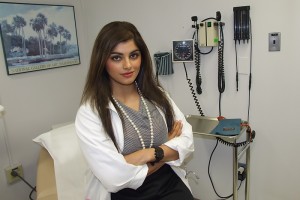
“…and miles to go before I sleep…” Most medical residents can more than relate to these famous words by Robert Frost. Days that melted into night, and nights that blurred into days, were often known as “long calls.” These are now an extinct species, akin to the wooly mammoth. Interns (also known as first-year residents) who started in July of this year will never experience long call because of the new, shortened work hour limitations imposed by the Accreditation Council of Graduate Medical Education (ACGME). Previous to this new work hour limitation, all residents like me, regardless of their year in training, could work up to 30 hours continuously. Now, interns can only work up to a maximum of 16 hours at a time. This new rule was put in place to decrease the possibility of medical errors due to exhaustion and sleep deprivation from working long hours. As with most changes, this change too, is a double-edged sword.
Fewer working hours means more shift changes between interns, and more sign outs. Sign outs are sessions where the exiting intern goes through the list of admitted patients one by one, and conveys any pertinent issues or problems to the next covering intern. Although measures are always taken to be thorough during sign out, naturally the more sign outs there are between interns, the greater the risk of omitting a vital piece of information. Unfortunately, with this greater number of sign outs, the whole process can turn into a game of “phone” where people sit in a circle and attempt to whisper the same phrase down a line. In the game, often what was originally said is totally contorted by the time the phrase comes back to the first person in the line.
In addition, when it comes time for these new interns to be second-year residents (who can work up to 28 hours continuously), they won’t have adequate experience, considering they will never have worked a shift greater than 16 hours. Having to work for 28 hours at a stretch will be a novelty which might be overwhelming for some, especially since they will also be supervising interns concurrently.
Although it is too soon to say for sure, I currently can’t imagine any advantages with this new work hour implementation. The opportunity of working in the middle of the night and making decisions in an acute setting will not be experienced by the new interns, and this might present disadvantages when they become supervising residents. With a greater number of sign outs between shifts, there will be a greater chance of missing a vital piece of information between interns.
Whether or not the interns are getting more rest and sleep is also questionable. What the interns choose to do during their mandatory 10 hour break between shifts is entirely up to them, and when polled, most of the interns still report being sleep-deprived during months where they are on an inpatient hospital rotation. Essentially, if these rules were established to produce a well-rested physician, one less inclined to make medical errors, it is hard to say whether the ACGME will come close to attaining its goal.
Follow the UConn Health Center on Facebook, Twitter and YouTube.



